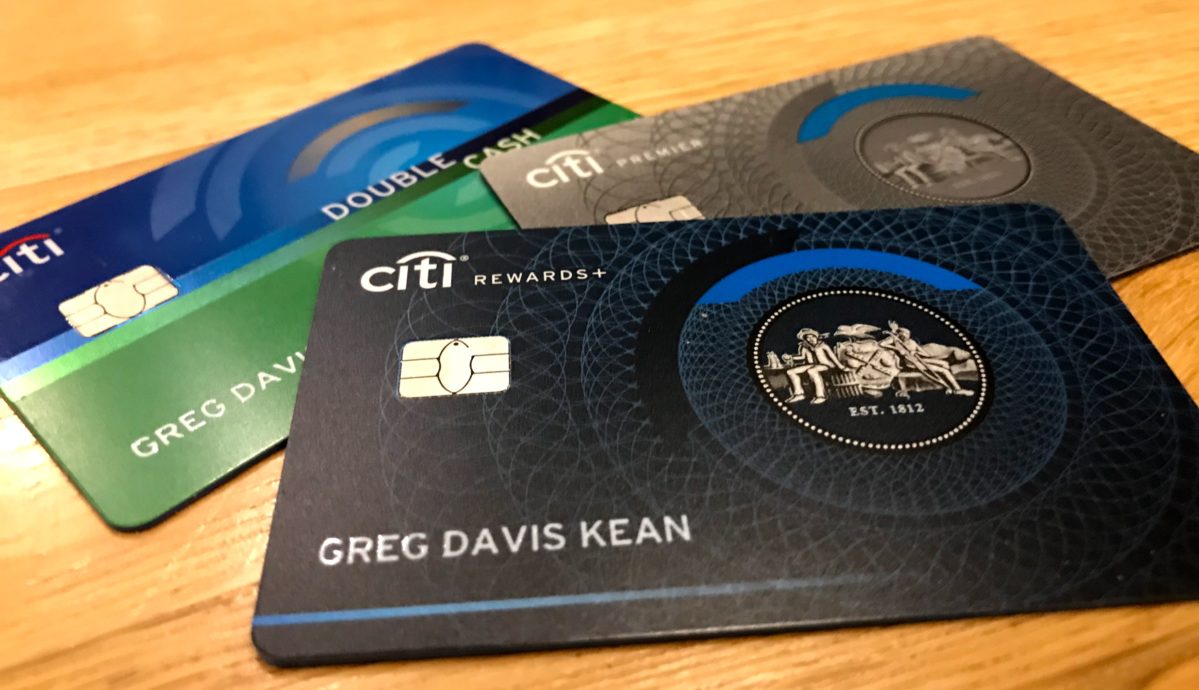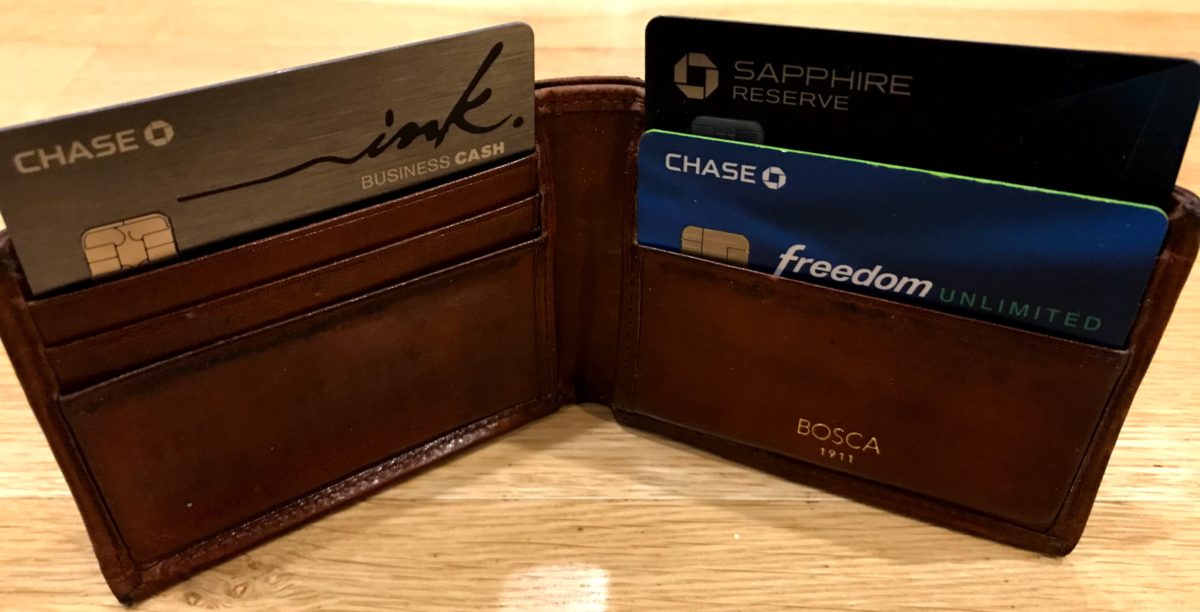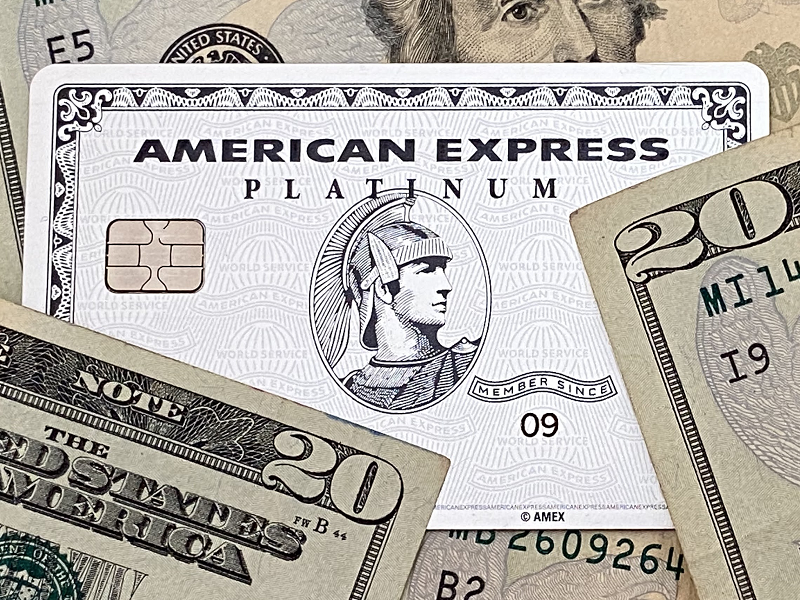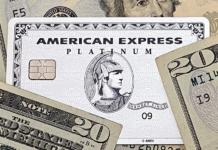Update 11/15/20: Transfers from Citi to Shop Your Way no longer have 20% bonus. Point transfers from Citi are no longer recommended.
A couple of years ago a friend asked me which credit card she should get. She was interested in earning rewards, but not for travel. She wanted to use her rewards to treat herself to stuff: new clothes, shoes, gadgets, whatever. I recommended a 2% cash back card. While I generally have a strong preference for transferable points programs, they haven’t historically been good for buying “stuff”. The key to maximizing rewards has long been to use points for travel. Recently, that has started to change. Now, I think that transferable points programs may be the way to go, even for stuff-seekers like my friend. Here’s a round-up of ways to get outsized value for non-travel rewards…

Citi Double Cash + ThankYou Rewards

In many ways Citi offers the sweetspot for stuff-seekers. It offers good value for those who want to keep things simple and it offers great value for those willing to do a little work…
Good value: 2% rewards (simple)
You can start with the fee-free Citi Double Cash to get 2% cash back for all spend. Then use that cash back to get literally anything. It’s a super simple way to get good value for non-travel rewards. Plus, it sets you up to do even better when you’re ready to maximize your rewards…
Better value: 2.4% rewards (complex)
Citi Double Cash is a unique cash back card because it offers the option to convert your cash back rewards to Citi ThankYou Rewards points. That’s exciting for those who want the option to get great value through transfers to Citi’s travel partners, but that’s not what this post is about. It’s also exciting for stuff-seekers who are willing to jump through a few hoops. Here’s how to get more value from your rewards:
- Convert your Double Cash cash back to ThankYou points (1 penny = 1 point)
- Convert your ThankYou points to ShopYourWay points (1 point = 1.2 cents value)
- Use ShopYourWay points to buy gift cards for the types of things you really want. See this post for details.
With this process, you’ll get 20% more value from your Citi Double Cash rewards. So, instead of getting 2% value, you’ll get 2.4%. One big downside to this approach is that many of the available gift cards have very low maximum values. That can limit what you can get “for free.” For example, you can redeem points for $30 Walmart gift cards and Walmart allows up to 5 gift cards to be used per online order. So, at least online, you are limited to $150 per purchase.
Even better value: 2.66%
Sign up for the fee-free Rewards+ card in order to get a 10% rebate on all ThankYou point awards, up to 10,000 points back per year. Then combine your Double Cash and Rewards+ ThankYou accounts (you’ll be offered the option to combine when you click through to ThankYou Rewards from your Citi online account). By doing this, you’ll get 10% of your points back when redeeming your Double Cash rewards indirectly for gift cards as described in the section above. Without the Rewards+ rebate, $120 in gift cards would cost 10,000 points (1.2 cents per point value). After the rebate, $120 in gift cards costs 9,000 points (1.33 cents per point value). Since the Double Cash card earns the equivalent of 2 points per dollar, this means that you’ll earn 2.66% back towards gift cards on all spend!
Best value: 4% in select categories, 2.66% everywhere else
The $95 Citi Premier Card earns 3X ThankYou points at grocery stores, gas stations, restaurants, and select travel (flights, hotels, travel agencies). By following the above steps to redeem points for gift cards, and combining with the Rewards+ card, these 3X categories offer 4% back in rewards!
A great strategy is to use the Premier card for all 3X categories of spend and use the Double Cash everywhere else. If you’re worried about the $95 annual fee, consider the fact that you only need about $800 per month in 3X spend to do better with the Premier card than with the Double Cash alone. I don’t know about you, but I easily spend more than $800 per month on groceries and dining.
Citi Double Cash + ThankYou Rewards Step by Step
If you’re interested in earning non-travel rewards as described above, then here’s what you need to do:
1. Sign up for the Citi Double Cash card. Use it for all spend in order to earn 2% cash back everywhere.
If/when you’re ready to make things complicated, go on to the next steps…
2. Sign up for the Citi Premier card. Even though the Rewards+ card is arguably the next logical step, doing so will stop you from qualifying for the Premier card’s much better signup offer (unless you wait 24 months after receiving the signup bonus on the Rewards+ card). The 60,000 points welcome offer on this card is worth $720 in gift cards through the process above before adding the Rewards+ card to the mix.
3. Sign up for the Citi Rewards+ card. This will give you a 10% rebate on all ThankYou points redemptions, up to 10,000 points back per year.
Chase Ultimate Rewards

Chase’s collection of cards that earn Ultimate Rewards points have always been a decent choice for stuff-seekers since points can be directly cashed out for 1 cent each either by depositing to your bank account or by erasing statement charges. And now that Chase has introduced “Pay Yourself Back,” it’s possible to get up to 1.5 cents per point. One advantage that Chase has over Citi is that Chase offers multiple fee-free 3X and 5X categories (via various cards). The biggest disadvantage compared to Citi is that you need to get Chase’s $550 Sapphire Reserve card to unlock the full value of your points.
Pay Yourself Back
Chase’s Pay Yourself Back feature allows Sapphire Preferred and Sapphire Reserve cardholders to redeem points to erase statement charges for certain categories of spend. Through April 2021, Sapphire Preferred and Sapphire Reserve cardholders can use points to pay for grocery, restaurant, food delivery & takeout, home improvement store purchases, and select charitable contributions. When doing so, Sapphire Preferred cardholders get 1.25 cents per point value and Sapphire Reserve cardholders get 1.5 cents per point value. After April 2021, we don’t know if Chase will keep the current categories of spend or switch to new ones.
With this feature, you can directly redeem points at good value for the intended categories (grocery, restaurant, home improvement, etc.). Or, you can buy gift cards to other merchants and pay yourself back for those gift cards. Both grocery stores and big-box home improvement stores tend to have huge selections of 3rd party gift cards available.
Good value: 2.5%, 3.75%, 6.25% in select categories, 1.9% everywhere else
Combine the $95 Sapphire Preferred with the fee-free Freedom Unlimited. The $95 Sapphire Preferred card isn’t too exciting on its own (it earns 2X for travel & dining and 1X everywhere else), but it does unlock the ability to Pay Yourself Back with points worth 1.25 cents each. The Freedom Unlimited card offers 5X for travel booked through Chase, 3X for drugstore and dining purchases, and 1.5X everywhere else. In general, you should use the Sapphire Preferred card only for travel not booked through the Chase portal or for international purchases (since the Freedom Unlimited charges foreign transaction fees). The Freedom Unlimited card offers better rewards everywhere else. Once you earn points on the Freedom Unlimited card, you can freely move those points to your Sapphire Preferred account in order to redeem for stuff you want either directly by buying things with your Sapphire Preferred card at qualifying Pay Yourself Back stores, or by buying gift cards from those stores.
Better value: more 5X (6.25%) with no additional fees
Add the Ink Business Cash and Freedom Flex cards to your line up. Both of these fee-free cards offer additional 5X categories:
| Card Info Name and Earning Rate (no offer) |
|---|
Earning rate: 5x travel booked through Chase Travel℠ ✦ 5X Lyft through March 2025 ✦ 3x dining ✦ 3x drugstores ✦ 5X in rotating categories on up to $1,500 spend per quarter (Q2 2024: Amazon, Hotels & Restaurants) |
Earning rate: 5X office supplies and cellular/landline/cable (on up to $25,000 in total purchases in 5x categories annually) ✦ 2X on the first $25K in combined purchases at gas stations and restaurants each cardmember year ✦ 5X Lyft through March 2025 |
Best value: 4.5%, 7.5% in select categories, 2.25% everywhere else
After you’ve held the $95 Sapphire Preferred card for a year, it’s worth considering upgrading to the $550 Sapphire Reserve card. The card automatically rebates $300 in travel spend each year, so the difference in price isn’t as extreme as it looks. After considering other perks that the Sapphire Reserve offers (such as $60 DoorDash credit), I think it’s reasonable and conservative to estimate the difference in effective annual fees as being about $150.
The Sapphire Reserve offers 1.5 cents value with Pay Yourself Back vs 1.25 cents per point with the Sapphire Preferred. If you redeem 60,000 points per year, you’ll get $150 more value with the Sapphire Reserve. So, if you plan to redeem more than 60K points per year at 1.5 cents value, then it’s worth upgrading to the Sapphire Reserve.
Ultimate Rewards Step by Step
If you’re interested in earning non-travel rewards via Chase Ultimate Rewards as described above, then here’s what you need to do:
1. Sign up for the fee-free Chase Freedom Unlimited card. Use it for all spend. You’ll earn a minimum of 1.5 points per dollar.
2. Sign up for the $95 Chase Sapphire Preferred card. This offers both a great welcome bonus and the ability to redeem points at better than 1 cent per point value. Even if you’re more interested in the Sapphire Reserve card, you’ll probably do better signing up for this one for the better welcome bonus and then later upgrading. The 80,000 point Sapphire Preferred offer (which is active at the time of this writing) is worth a whopping $1,000 towards Pay Yourself Back.
If/when you’re ready to earn 5X rewards in more categories, do the following…
3. Sign up for the fee-free Chase Ink Business Cash. Earn 5X at office supply stores (which sell gift cards!), internet, cell service, and more. Move points to your Sapphire Preferred to make the points worth more.
4. Sign up for the fee-free Chase Freedom Flex. Earn 5X in categories that change each quarter. Move points to your Sapphire Preferred to make the points worth more.
If you decide that you’ll be better off with the Sapphire Reserve card then you can upgrade to that card a year after acquiring the Sapphire Preferred.
Amex Membership Rewards

Amex’s Membership Rewards program is great for those who like to transfer points to airline partners, but it’s severely lacking for stuff-seekers. There is one path, though, to get good value…
The Platinum Card® from American Express for Schwab offers the ability to redeem points into your brokerage account at a value of 1.25 cents per point. You can then optionally move that money to a regular checking account to use to buy stuff. Or you can keep it in the brokerage account to invest for your future.
The problem with this card is that it costs $550 per year. Fortunately, for stuff-seekers, it includes some annual credits that you may find valuable:
- $200 in Uber Eats Credits: Amex will reimburse $15 per month ($35 in December) for Uber charges, including Uber Eats.
- $100 in Saks Fifth Avenue Credits: Up to $50 in credits each year from January through June; and another $50 July through December.
- $100 to $200 statement credit: Receive a $100 Card statement credit if your qualifying Schwab holdings are equal to or greater than $250,000 or receive a $200 Card statement credit if your qualifying Schwab holdings are equal to or greater than $1,000,000, when measured following Card account approval and annually thereafter.
There are also many ways to earn Amex Membership Rewards points. For details, see these topics in our Membership Rewards Guide:
- Credit Card Welcome Bonuses
- Credit Card Upgrade Bonuses
- Shopping Portal Rewards
- Credit Card Category Bonuses
- Credit Card Referrals
- Amex Offers
- Miscellaneous Other Options for Earning Amex Membership Rewards Points
Discover It
Discover has long offered a way to get better value for “stuff” through the Discover It or Discover It Student card. Instead of cashing out your Discover It Cashback directly, you can use it to buy discounted gift cards. For example, I recently made a purchase through Staples after first redeeming Discover It Cashback for Staples gift cards at 20% off face value. In other words, I bought a $200 item from Staples for $160 in Discover Cashback. That means that each Discover Cashback penny became worth 1.25 cents. Discounts vary by gift card.
Capital One “Miles”
Capital One cards that earn “Miles” usually offer full value only for travel purchases. Through the end of this year (2020), though, they are offering full value when you redeem for restaurant delivery (including Uber Eats), takeout and streaming service purchases.
US Bank Altitude Reserve
Points earned on the Altitude Reserve card are worth 1.5 cents each when used for travel either through US Bank’s travel portal or through Real Time Mobile Rewards. One non-travel use is with Uber Eats. Once you are signed up for Real Time Mobile Rewards you can use your card to load cash to your Uber account and redeem points at 1.5 cents each to pay. Once the cash is in your Uber account it can be used for Uber Eats food orders.
Conclusion
I believe that the Citibank approach is likely the best fit for most stuff-seekers. There, you can get fantastic value with no annual fee, and you can optionally pump up your rewards by adding a $95 annual fee card.
Chase Ultimate Rewards cards also offer a great path for stuff-seekers. Chase offers more potential than Citi, but you need more cards to truly maximize your earnings, and you need a very expensive card to maximize redemption value.
The Discover It card also offers nice value for stuff-seekers. The Discover It Student card, in particular, has long been the card I recommend for students setting out to get their first card. Both cards offer rotating 5% categories and 1% everywhere else. It’s the everywhere else part of that equation that bothers me. The earning power is very poor outside of Discover’s 5% categories.
Amex Membership Rewards, Capital One “Miles”, and US Bank Altitude Reserve points are poor choices for stuff-seekers, but in each case it is possible to get better value for some non-travel things.




![(EXPIRED) Amazon: Save up to 40% when redeeming at least 1 Membership Rewards point [Targeted] a laptop on a table](https://frequentmiler.com/wp-content/uploads/2022/07/Amazon-Laptop-Featured-Image-218x150.png)

For Citi, there is one other option to consider to improve on the following recommendation: “A great strategy is to use the Premier card for all 3X categories of spend and use the Double Cash everywhere else.”
People that have the Rewards+ card can earn a higher multiple by using the Rewards+ card for small dollar amount transactions, since it rounds up to the nearest 10 points (e.g., a $2 transaction earns 10 points, which is a 5x earning rate).
Yes, great point. On all transactions under $5 you’d do better with the Rewards+ card over the Double Cash, and transactions under $3.33 do better than 3X Premier.
Greg, great post. On the UR pathway, I have the CSP, Ink Cash and the old (discontinued) Freedom card. Would that Freedom card replace the Flex or Unlimited in your sequence of cards? Or does it matter? I’m assuming Flex since the Unlimited earns 1.5x. Also, a quick question related to another recent post. I have the old AMEX SPG Card, which is now the Bonvoy. Can I get the SUB for the Bonvoy Brilliant card if I sign up? Thx!
Yes it would replace the Flex.
Yes you could get the bonus for the Brilliant unless you have (or have had) a Chase Bonvoy card too? Check out the Application Tips section here: https://frequentmiler.com/spglux/#Goto
For numerous reasons, I won’t do business with the big NY Banks such as Citi and Chase. BMO Harris has a fee-free 2% cash back MasterCard. Lots of other options out there too.
Why is that? I mean technically if you are good at maximizing your earn on spend you can essentially be either a net zero or negative value customer.
I’ve seen ppl make the same argument about the Vuse SB and Mypoints deals, but i look at it like my $35 purchase costs them $100, net -$65 for them. That is $65 closer to putting a vaping company out of business which I am 100% ok with.
IMHO the Big NY Banks are criminal organizations. They repeatedly get fined by the CFTC and other government regulators. Nobody every goes to jail.Here’s just one recent example, there are dozens more.
https://www.cnbc.com/2020/09/23/jpmorgan-to-pay-almost-1-billion-fine-to-resolve-us-investigation-into-trading-practices.html
Sounds like someone was shut down and is now a bit snippy about it. LOL
I only do business with the banks that don’t shut me down. :-((((((((((
Nope, never been shut down by any bank in my life. I just don’t like to do business with criminals.
Greg:
Great Post, well done. Thank you.
But in UR Step by Step section, step 2, you erroneously state that the CSP is “fee free”. Earlier you do mention the $95 fee.
Loving the podcasts, btw.
Thanks! And… fixed. Thanks for catching that.